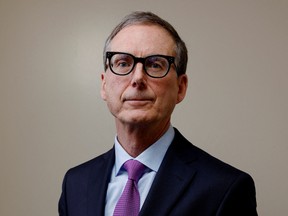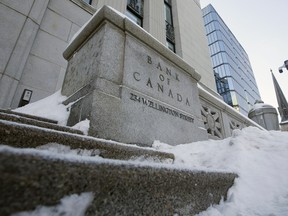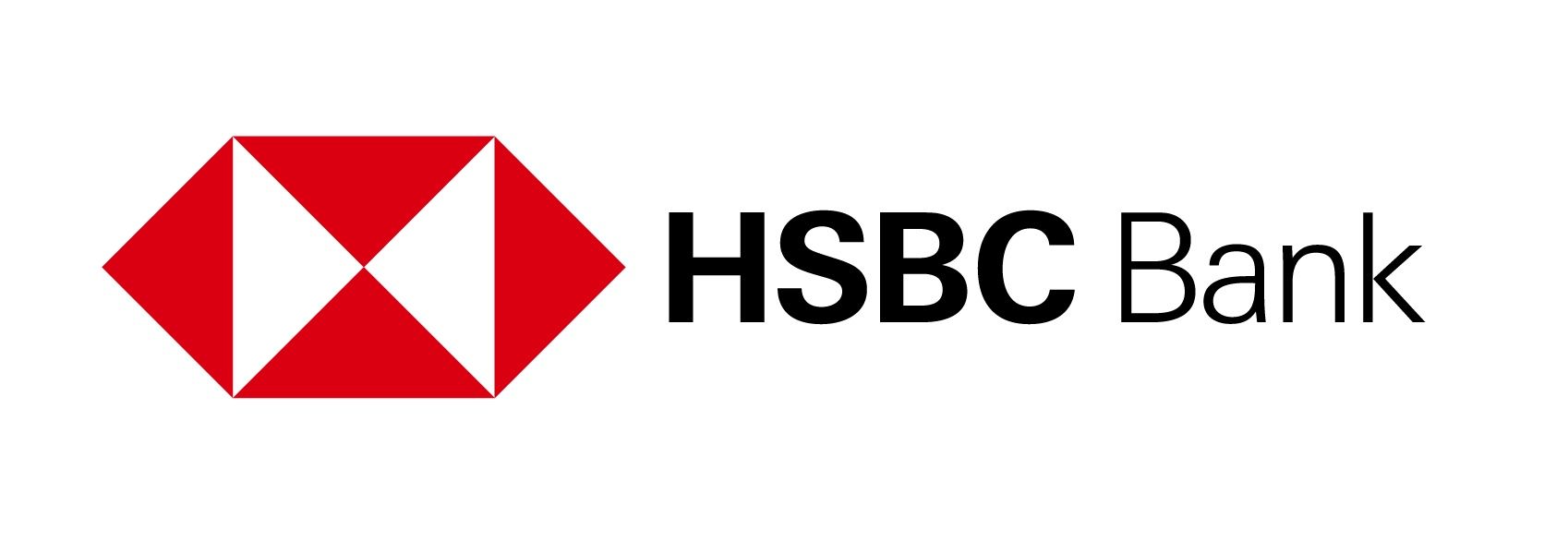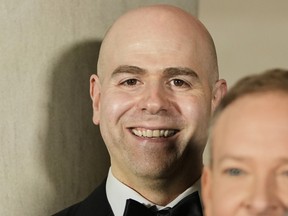Rate hike pause is conditional, Macklem emphasizes

Article content
Bank of Canada governor Tiff Macklem and one of his deputy governors, Paul Beaudry, both spoke on Feb. 16 — a rare double feature for Bank of Canada watchers. Neither really moved the needle; the central bank is still on track to pause interest rate increases at its next policy announcement in early March. But the decision to stay the course was suggestive, given Macklem’s appearance at the House finance committee and Beaudry’s speech at the University of Alberta represented the Bank of Canada’s first opportunities to tweak its message in the wake of the blowout jobs report on Feb. 10. Here’s what you need to know.
Advertisement 2
Article content
Mind the asterisk
Article content
Macklem’s opening statement at the finance committee was nearly 900 words, but he said nothing of the Statistics Canada report published six days earlier that said employers added 150,000 jobs in January, a stunning number that shows the economy has more momentum than the central bank and other forecasters realized. The Labour Force Survey (LFS) is notoriously volatile and Statistics Canada itself advises against making too much of one report. Still, the latest tally was well clear of the survey’s margin of error, implying the result can be trusted as a signal of what’s happening in the labour market. If the economy is headed for a recession, it could be a mild one because the jobless rate is near a record low.
Advertisement 3
Article content
A direct reference to the hiring numbers doesn’t mean the LFS didn’t register at the Bank of Canada. Quite the contrary. Macklem wished the committee “good morning,” told lawmakers he was pleased to be there, and reviewed that the central bank in January had raised the benchmark interest rate a quarter point and communicated that it expects to hold the policy rate at 4.5 per cent while it assesses the impact of last year’s rate increases. Then he said this: “This is a conditional pause — it is conditional on economic developments evolving broadly in line with our forecast.”
Article content
The emphasis on the conditionality of the Bank of Canada’s new forward guidance is important. Monetary policy is always contingent on the economy breaking as central banks foresee in their forecasts. In extraordinary circumstances, central banks will emphasize which way they are leaning, betting that extra clarity will shape expectations and help get them where they want to go. That means playing up, or playing down, the contingent nature of their extraordinary guidance, depending on the circumstances.
Advertisement 4
Article content
When Macklem took over as governor in June 2020, his predecessor already had dropped the benchmark rate to 0.25 per cent, which is about as low as the Bank of Canada thinks it can go without messing up the financial system. Macklem’s contribution to fighting the COVID-19 crisis was pledging to keep the benchmark rate near zero for about two years. There were conditions attached, but Macklem emphasized his intention to keep rates low for a long time. The economy was suffering from an epic collapse and he wanted to err on the side of stimulus and growth.
This is a conditional pause — it is conditional on economic developments evolving broadly in line with our forecast
Tiff Macklem
Now, Macklem’s main worry is inflation. The Bank of Canada’s forecast has year-over-year increases in the consumer price index slowing to the central bank’s target of two per cent at some point in 2024. Policymakers say the risks to that forecast — the variables that could cause inflation to remain hotter than they expect, or trigger a more painful recession — are “balanced.” However, as Macklem reminded the finance committee while taking questions, the central bank is more worried about the “upside risks” to inflation. In other words, this time, Macklem intends to err on the side of slowing the economy rather than juicing it.
Advertisement 5
Article content
The emphasis on the conditionality of the Bank of Canada’s intention to pause was a subtle reminder that outsized hiring and an unemployment rate near a record low are out of step with a forecast that has the economy stalling over the first part of 2022. Interest rate increases are still on the table.
2% or bust
There’s an interesting debate taking place about whether central banks’ cherished inflation targets of two per cent are realistic in a post-pandemic world. Policymakers and experts settled on that number in the late 1980s and early 1990s, a period when inflation had been vanquished, the Cold War had been won, labour was abundant and China was driving a new era of global trade. That’s no longer the world in which we live, and some prominent economists are casting doubt on whether it’s even possible to get inflation back to two per cent without killing the economy. “If people sat down today, they would not come up with two per cent, they would come up with three per cent to four per cent,” Mohamed El-Elrian, chair of Gramercy Funds and a widely read economic commentator, told Bloomberg Television on Feb. 14.
Advertisement 6
Article content
Beaudry, a widely respected academic who joined the Bank of Canada’s Governing Council in 2019, used his latest speaking opportunity to mount a vigorous defence of the two per cent target, calling it the “sweet spot on the inflation spectrum.”

According to Beaudry, inflation is largely determined by two things: companies’ cost pressures and their expectations of where prices are headed. When inflation is high, companies tend to adjust prices more frequently to keep higher prices from collapsing their margins. It’s fairly easy to do this without hurting sales because all companies are doing the same thing, so higher input costs are swiftly passed on to customers. Shoppers are left with the impression that there is no point seeking out a better deal because prices for everything are rising. An inflationary mentality takes hold.
Advertisement 7
Article content
When inflation is low, companies adjust prices less frequently, choosing to absorb marginal cost increases rather than risk losing price-sensitive customers. Therefore, expectations that the central bank will keep inflation at a low rate allows free-market competition to work properly. A low-inflation mentality takes hold, so even when price pressures heat up, it is relatively easy to bring them back down because economic actors trust the central bank to orchestrate price stability. A target is what allows that to happen, and three decades of practice suggests two per cent is the right number. They aren’t going to change course in the middle of an inflation crisis.
“The bank is fully committed to returning the inflation target to two per cent,” Beaudry said. The new mantra of central banking might be higher for longer.
Advertisement 8
Article content
Bank of Canada isn’t a follower
The Bank of Canada dislikes it when people accuse it of following the United States Federal Reserve. Because the economies of Canada and the U.S. are so interwoven, and the U.S. economy is so much bigger, there are limits to how much interest rates in Canada can diverge from Fed policy. But Canadian policymakers aren’t blind followers. They have lots of room to manoeuvre.
One of the main reasons Canadian policy is independent is because the Bank of Canada long ago stopped trying to control the exchange rate. A flexible currency is what economists call a “shock absorber.” A hot economy will generate a stronger exchange rate, which will help cool things off by lowering the cost of imports and making Canada’s exports less competitive. A weaker exchange rate will help stimulate growth by making those exports more competitive, generating growth and keeping deflationary forces at bay. “Neither outcome is bad,” Beaudry said. “Each has its own set of advantages.”
Advertisement 9
Article content
-

Macklem is sticking with rate-hike pause despite blowout jobs report — for now
-

Maybe Canada’s economy can pull off that soft landing after all
-

Canada’s ‘blowout’ jobs report raises questions about the path of interest rates
Beaudry reminded his audience of this dynamic while pushing back against the notion that all the big central banks are operating in lockstep. That’s important because the Fed probably will raise interest rates at least a couple of times more to get U.S. inflation under control. The Bank of Canada could also decide that it needs higher rates, but if it does, it won’t be because that’s what the Fed is doing.
“The bottom line is that we shouldn’t be too concerned if Canada follows a slightly different path to normalization than our counterparts,” Beaudry said. “What matters is getting all the way there.”
• Email: kcarmichael@postmedia.com | Twitter: carmichaelkevin
3 things the Bank of Canada subtly told us this week
2023-02-17 15:31:33








Comments
Postmedia is committed to maintaining a lively but civil forum for discussion and encourage all readers to share their views on our articles. Comments may take up to an hour for moderation before appearing on the site. We ask you to keep your comments relevant and respectful. We have enabled email notifications—you will now receive an email if you receive a reply to your comment, there is an update to a comment thread you follow or if a user you follow comments. Visit our Community Guidelines for more information and details on how to adjust your email settings.
Join the Conversation